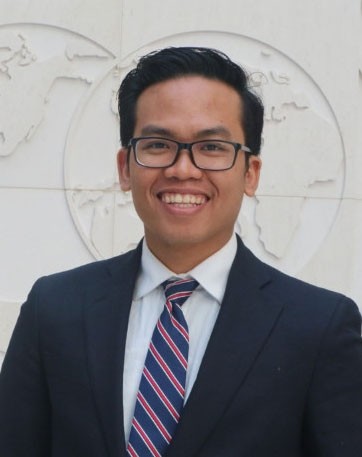Each year, July 30 marks the world human trafficking day, reminding the international community that it should reflect on what its efforts to combat human trafficking have accomplished thus far. A report by the International Labor Organization (ILO) reveals that human trafficking is the world's third-largest criminal business and generates over $150 billion in profit per year. More than 40 million people worldwide have become victims of human trafficking, with over 70% of victims being women and children. July 30 is a reminder that human trafficking remains a serious problem to this day.
Immigrant laborers in Asia and the Pacific have become a group that is among the most vulnerable to global smuggling. Forced labor business has become the most lucrative in this region, which includes the majority of the ASEAN states, amounting to a total of $51.8 billion in profit in 2014. Even though ASEAN has committed to combating human trafficking as a member of the UN Convention Against Transnational Crime and the UN Trafficking Protocol, the number of human trafficking syndicates continues to increase and the exploitation of workers in the region keeps escalating. Economic factors and the lack of coordination in law enforcement are common reasons why the situation is deteriorating. There are approximately 10 million migrant workers across the ASEAN region following the 2015 Rohingya refugee crisis, during which 25,000 people fled on boats to Bangladesh, Thailand, Malaysia, and Indonesia. Victims and many other people in affected regions are often unaware of the prevalence of human trafficking, and people are commonly trafficked without their knowledge. Therefore, it is important to raise awareness of human trafficking, particularly among vulnerable groups.
In the ASEAN region, modern slavery and human trafficking go hand in hand with low education levels and the economic disparity of vulnerable groups. In July 2019, the Anti-Human Trafficking authority in Cambodia arrested a woman suspected of trafficking three women from Banteay Meanchey province, bringing them to China where the women were to be married off. With 4.9 million migrants, Thailand has become a major destination for human trafficking. People from Myanmar, Cambodia, Laos, and Vietnam are abducted to become sex workers there. According to data released by the Thai government’s anti-trafficking division, the Thai police stopped 974 cases of human trafficking – mostly victims from Myanmar – in 2019.

There is a robust nexus between human trafficking and the global financial system. As the digital economy gains increasing relevance in modern society, digital technology enables traffickers to instantly launder funds associated with crime. Financial technology (FinTech), digital currencies, and digital financial services are particularly prone to criminal misuse like financial transactions and the circulation of illicit funds related to human trafficking. By using FinTech applications and social media, traffickers can move money and humans from country to country more swiftly. Criminals can easily transfer money through digital currencies like bitcoin, mobile payment platforms, or gift card purchases, obscuring the procedure of crimes. Online platforms also permit the trafficking business to recruit potential victims and customers throughout the region. Without specialized expertise, illicit funds are extremely difficult to identify, and illegal activities are hard to trace. Offering a promising, innovative solution, artificial intelligence (AI) technology can accelerate the fight against human trafficking.
With the help of AI, potential trafficking can be prevented. AI technology provides a tool to assist law enforcement in gaining information, identifying victims and traffickers, and collaborating with anti-trafficking organizations. In addition, AI software can also aid financial institutions in detecting suspicious transactions associated with potential human trafficking activity. For instance, the tool “Traffic Jam” utilizes an AI engine to help law enforcement officers with accelerating sex trafficking investigations by 50% to 60%. This tool processes information through face recognition and images in order to locate victims faster. Another new AI app is called “Hotels-50K”, which uses a database with millions of pictures from 50,000 hotels around the world to identify the exact location of a trafficking victim. A non-governmental organization in Malaysia created the app “Be My Protector” to report alleged trafficking cases through image transfers, enabling users to anonymously notify investigators of a human trafficking incident.
While the future AI technology is certainly promising, challenges still lie ahead. Some AI developers and innovators are concerned about adequate funding because the sector still is relatively unexplored. Regulatory uncertainty is the primary reason why investors hesitate to support this industry. Governments should collaborate with innovators to improve regulatory frameworks for data collection and access to information in order to mitigate the risk of data privacy abuse. Moreover, close collaboration among civil societies, internet service providers, technology companies, financial institutions, regulators, law enforcement agencies, and trafficking survivors is essential to strengthening comprehensive regulatory measures. With the support of all stakeholders, AI technology can expedite the achievement of the 2030 Sustainable Development Goals to end modern slavery, forced labor, and human trafficking.
